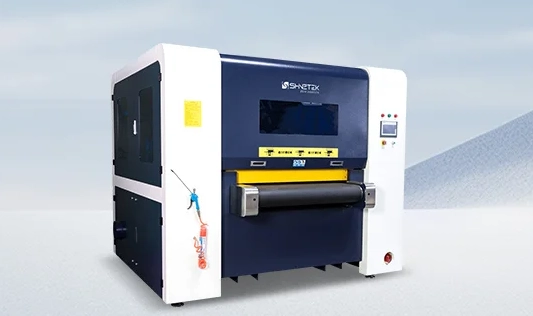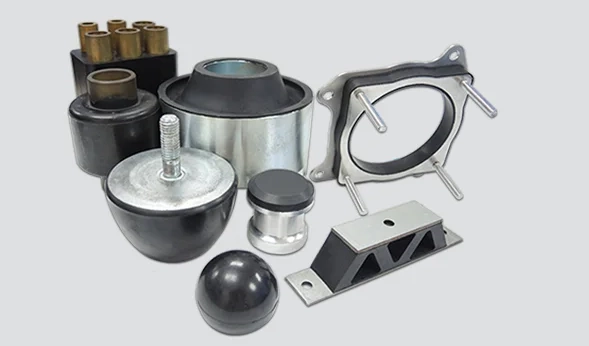In modern manufacturing, precision and consistency are paramount. Whether in aerospace, automotive, medical devices, or general engineering, components must meet stringent dimensional and surface quality standards. One often overlooked yet critical aspect of this process is burr removal. Burrs—tiny, unwanted projections of material—may seem insignificant, but they can compromise part fit, function, and safety. To address this issue with speed, efficiency, and reliability, manufacturers are increasingly turning to the automatic deburring machine. This article Shinetek explores the automatic deburring machine's functional benefits and application areas. Designed for industrial decision-makers, plant engineers, and production quality managers, it highlights why automation in deburring is no longer optional—it's essential.

Functional Advantages of Using an Automatic Deburring Machine
1. Consistent Quality Across High Volumes
Manual deburring is subject to operator fatigue, inconsistency, and skill variance. An automatic deburring machine ensures that every part receives the same treatment, regardless of production shift or operator. This consistency is crucial in applications where micron-level tolerances matter, such as aerospace turbine blades or medical implants.
For example, in CNC-milled aluminum housings used in electronic enclosures, even a slight burr can interfere with PCB assembly or mounting. The automatic deburring machine ensures that each housing meets strict flatness and edge profile standards—no undercuts, no over-processing.
2. Drastic Reduction in Cycle Time
An automatic deburring machine can reduce a task that might take 1–2 minutes per part manually to under 10 seconds per part. This time savings scales exponentially in high-volume environments, allowing manufacturers to increase throughput without expanding labor or floor space.
By integrating the deburring station directly in-line with the machining or finishing workflow, parts can be deburred immediately after production, eliminating batch handling delays and reducing overall lead time.
3. Enhanced Worker Safety and Ergonomics
Manual deburring often involves repetitive wrist motions, exposure to sharp burrs, and contact with abrasive tools—leading to operator fatigue, strain injuries, and occasional accidents. The automatic deburring machine removes the operator from direct contact with cutting surfaces, using enclosures, interlocks, and safety light curtains to ensure a secure working environment.
This also reduces the risk of inconsistency due to human error, particularly in complex parts where multiple edges and contours must be addressed.
4. Cost Efficiency Over Time
While the initial investment in an automatic deburring machine may appear significant, it results in a lower cost per part over the long run. Reduced labor, scrap, rework, and quality inspection requirements all contribute to cost savings. Additionally, modern deburring systems are designed for low maintenance and long tool life, further lowering operational expenses.
In industries such as automotive, where tens of thousands of parts are produced daily, even marginal time and quality improvements translate into substantial bottom-line benefits.
Industrial Applications of the Automatic Deburring Machine
1. Automotive Manufacturing
From engine blocks and gear housings to brake components and suspension arms, automotive manufacturing involves numerous cast, forged, and machined parts. Burrs in these components can interfere with fluid flow, sealing surfaces, or cause premature wear. The automatic deburring machine is extensively used in this sector to ensure surface preparation meets performance and reliability standards.
Some deburring machines are tailored for specific parts such as crankshafts or cylinder heads, allowing inline integration with engine assembly lines and ensuring zero-defect production.
2. Aerospace and Defense
Aerospace components are subject to extreme stress, vibration, and temperature variation. Even micro-burrs can cause stress concentration points that initiate cracks. The automatic deburring machine is used to process turbine blades, landing gear elements, and structural brackets with uniform precision, contributing to both safety and airworthiness certification.
Moreover, the ability of these machines to handle titanium, inconel, and composite materials further expands their relevance in this demanding field.
3. Medical Devices and Implants
In surgical tools and orthopedic implants, burrs are unacceptable due to potential tissue damage or infection risk. Automatic deburring machines with fine-tuned abrasives or micro-vibratory media ensure smooth, polished edges suitable for internal human contact. These systems are often used in ISO 13485-certified cleanroom environments to meet regulatory standards.
In this field, validation documentation and repeatability are just as critical as performance. Automatic deburring systems offer complete control traceability and programming repeatability, helping companies meet FDA and CE marking requirements.
4. General Engineering and Tooling
In industries such as industrial machinery, robotics, and tooling production, part compatibility and ease of assembly are key. An automatic deburring machine enables manufacturers to create plug-and-play components that fit and function as intended, right out of the box. It also supports hybrid geometries, such as injection-molded inserts in machined frames or metal-plastic bonded assemblies.
In today's high-precision manufacturing environment, the automatic deburring machine is not merely a process enhancer—it is a quality gatekeeper. Whether in aerospace, automotive, medical, or general engineering, its ability to deliver fast, consistent, and safe finishing operations makes it a foundational component of any modern production line. With its wide adaptability to part sizes, materials, and geometries, combined with integration potential into Industry 4.0 frameworks, this equipment supports manufacturers' goals of cost reduction, defect elimination, and operational excellence. Investing in an automatic deburring machine is a strategic move toward smarter, safer, and more scalable manufacturing. It transforms a once-manual bottleneck into a reliable, hands-free, high-speed advantage.
https://www.shinetekgrind.com/Products
www.shinetekgrind.com
Suzhou Shinetek Grinding Technology Co., Ltd.




+ There are no comments
Add yours